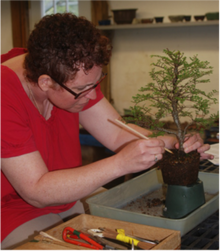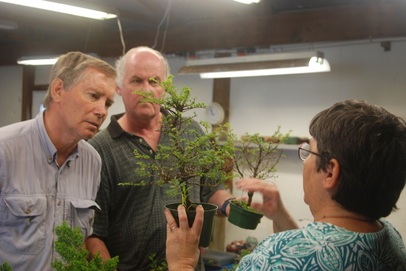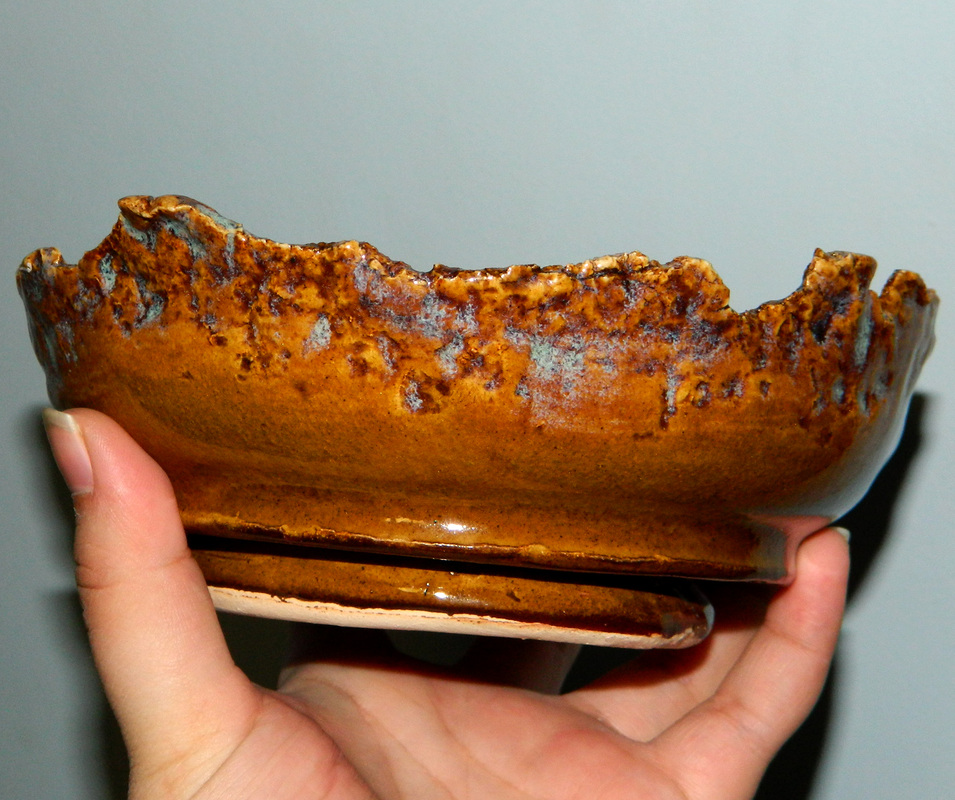Bonsai Information and TechniquesThis page is one that will continue to grow and expand as materials are covered in our monthly meetings. Be advised, the topics covered here will be done so as fully as possible, but we encourage beginning bonsai enthusiasts to come to our meetings and ask questions before attempting the techniques discussed.
Current Seasonal Topic!
Your browser does not support viewing this document. Click here to download the document.
Club Talks
Record KeepingIf you wish, like many of us here in FLBS, to keep closer records of your trees, you may find these files useful.
Help yourself!
Wiring TechniqueWe had a great presentation on wiring at our January 2018 meeting. Check out the pdf version here:
Here is a summary of the Bonsai Mirai wiring techniques shown in Ryan Neil's three videos (which we encourage you to watch because he visually walks you through it):
Bonsai Pest and Disease ControlKnowing what is ailing your tree is crutial to fixing the problem. Be vigilent! You won't be able to treat in a timely manner if you don't notice the pests or disease early enough.
As requested by our members at one of our meetings, here is a pdf of the slides showing examples of pests and diseases and how to treat them. Be sure to use these measures safely! Protect yourself, and treat outside, spraying down-wind if you need to spray your tree.
Wound HealingWhile it is impossible to craft bonsai without the necessary pruning and branch selection, it is possible to do everything we can to ensure the health of the tree after removing material. Check out the file below:
Soil StudiesOur bonsai society, having the priviledge of close association with Cornell University, has the benefit of several curious, science-minded members who want to take some of the mystery out of the techniques of bonsai. One of our members has done some soil research, and is now published! His article, "Water Retention and Drainage in Bonsai Soil" by Brian Heltsley, has made it's appearance in The Journal of the American Bonsai Society, Vol. 48, No. 4 (2014), and offers a lot of insight into the critical balance of water retention and aeration to make the ideal soil conditions for bonsai.
We have made the article, and subsequent works, available here on the website for anyone interested in looking at the findings.
Below is another soils publication Brian authored.
Check out Brian's slides from his latest presentation to our club by visiting the following url:
https://cornell.box.com/s/5ih5do28iw5vk0dwj5y290bbbrc6lfel Re-potting your bonsai
 A Finger Lakes Bonsai Society member, Tomi, teasing out the roots of her new tree at an International Bonsai workshop. Photo by John Wiessinger. A Finger Lakes Bonsai Society member, Tomi, teasing out the roots of her new tree at an International Bonsai workshop. Photo by John Wiessinger.
Repotting is typically done every three to five years to encourage new, fine, fibrous root growth through root pruning, and to freshen the soil. Typically, this is done in the spring, and it is advised you do this then, though it could be done in the fall. It tends to have better results in the spring because the tree is already putting energy into new growth. Often you can tell if a bonsai needs repotting when the root mass is forcing the tree to lift out of the pot.
Here is how to re-pot your tree: In a clean work area, where you don't mind soil getting on the floor and table top, prepare your new pot. Small pieces of screen should be placed over the drainage holes and wired into place (take a bent, U shaped wire, and push it through the screen. Take both free ends of that U, and push them through the drainage hole in the pot from the inside, so that the screen in on the bottom of the inside of the pot. Bend the ends of the wire outward, flat to the bottom of the outside of the pot, securing the screen in place. Note: the screen doesn't have to be metal, it can be a piece of Latch Hook screen, which is plastic and easily found at art and craft stores). Some also suggest soaking your pot in water, so that it will not draw more water out of the soil when you place your tree in it, but this is not a mandatory step if you water your tree very well after re-potting. Take one or two long wires and tread them through the pot via the drainage holes and screens, and leave the ends coming up inside the pot (these will be used to wire in the tree later). Un-wire your tree from its current pot. Take a knife and cut around the edges of the pot, if the tree does not easily come free, and gently work the tree out of the pot, holding the tree at the base of the trunk, where it is sturdiest. Once the tree is out, set the old pot aside, unless you will be re-using the pot, in which case you should rinse it out and prepare it as if you were using a new pot, which is described above. Grasping the trunk of the tree as low as you can, hold or tip the tree so that you can take a root rake and begin to untangle the roots and dislodge the soil. Work outwards in, gently. Don't be too alarmed if a few roots break off, but don't yank whole knots out. Once all roots are teased out, take scissors or shears and prune roots back into a flat pad underneath the tree, shallow enough to fit into the desired pot. If needed, you can cut triangular wedges out of the pad, at its point going almost all the way to the trunk, to open up some space close to the trunk for better drainage and aeration. Two or three wedges, on opposite sides of the root mass works well, and the next time you re-pot you do the same thing, but rotate the wedges so that you're taking out old roots. Take a chop stick or screw driver and aerate the roots, firmly but slowly, with a wiggling motion, pushing it down through the root mass, working from the outside towards the trunk. If it meets with intense resistence, try a different spot, don't force it to break something in the root mass. Once roots are pruned thoroughly, it's ready to go into the new pot. Spread a layer of new soil on the bottom of the pot, and place the tree in the pot. Press and wiggle the tree into place, as desired for design, to insure that no air pocket is left underneath the roots. If needed, a scoop of soil right under where the trunk will be can help. Take the long wires from preparing the pot and cross them over the root mass, twist the ends together, and tighten them down on the tree, securing it in place. Two secured wires are preferable to make sure the tree is tight in the pot. Fill the pot with soil in scoops, working soil around the root mass with a chopstick to be sure no gaps and air pockets remain. Soak bonsai (submerge pot completely in water) for about ten minutes, allow to drain, and place back where it belongs. Clean work station, or continue with another tree. |
Bonsai Resources:
Check out this video of our own
| ||||||||||||||||||||||||||||||||||||||||||||||||||||||||||||||||||||||||||||||||||||||||||||||||
| ceramic_container_repair.pdf | |
| File Size: | 1111 kb |
| File Type: | |



